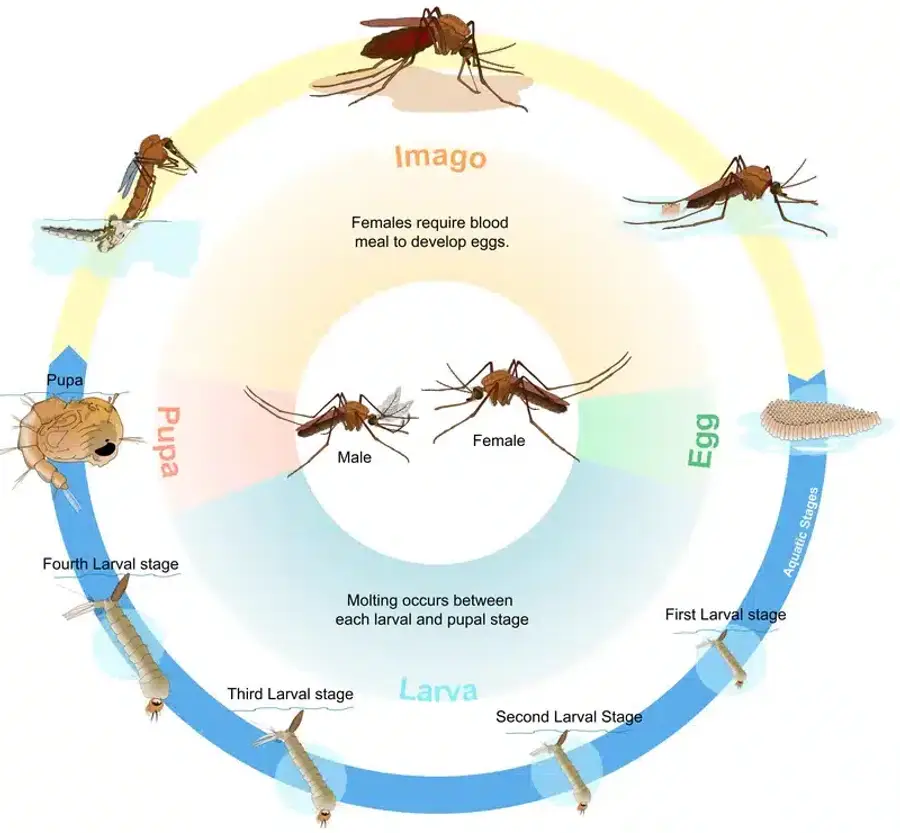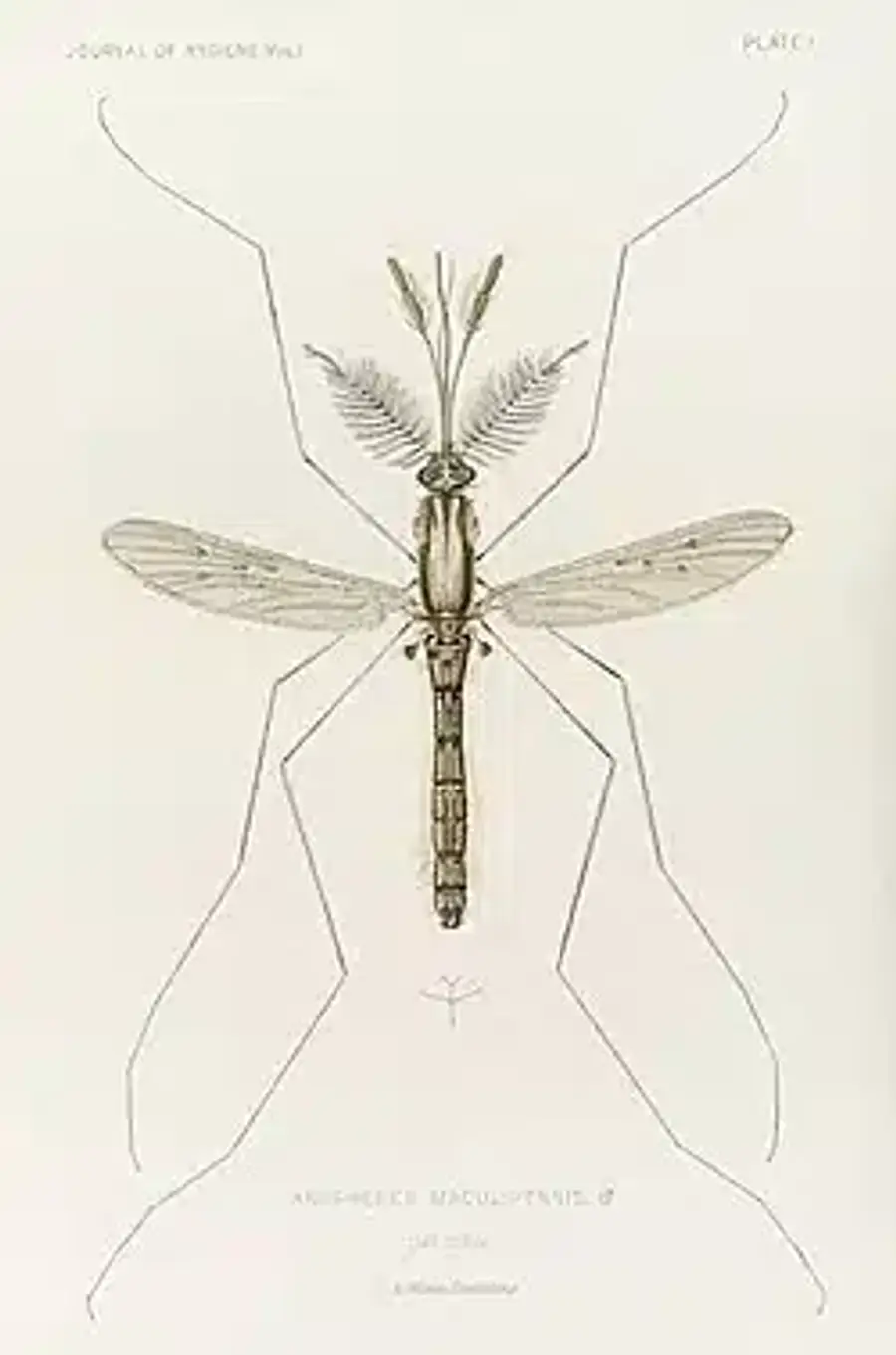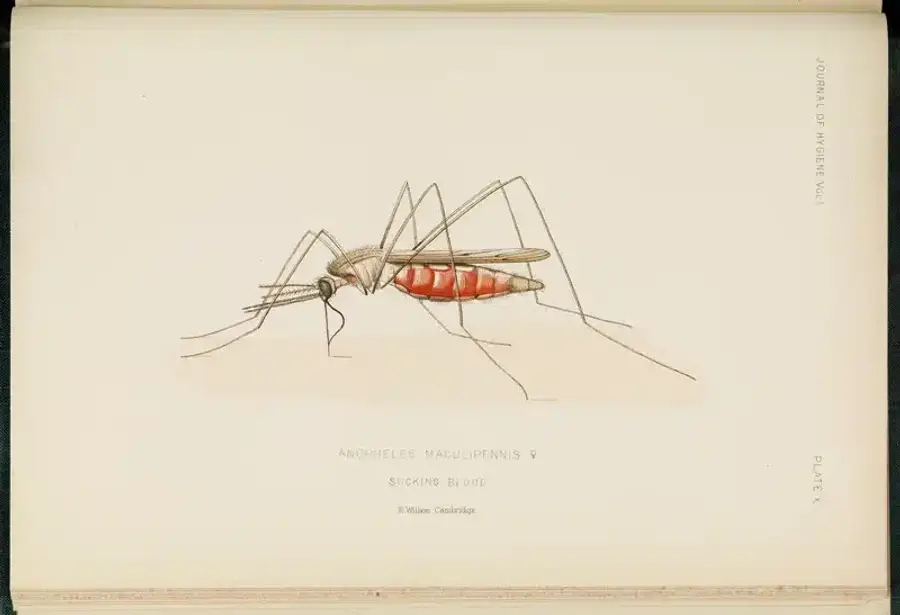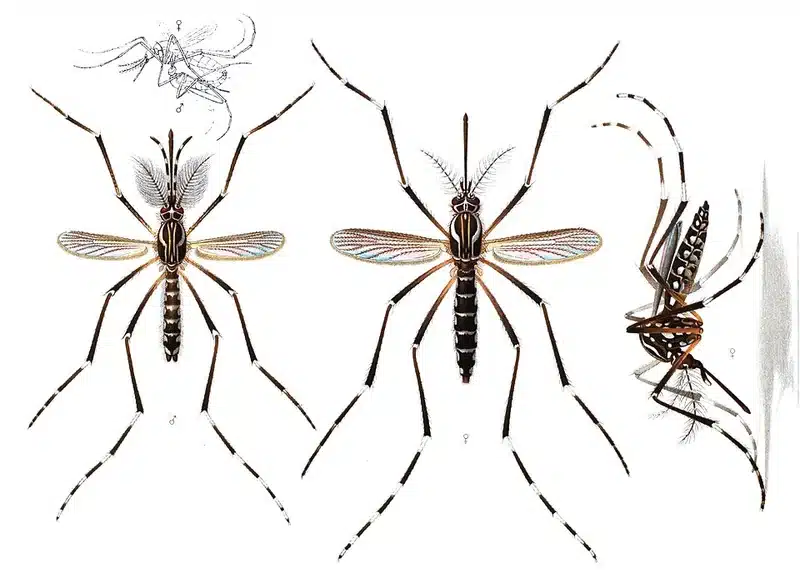Anyone who’s spent a summer evening outdoors knows the buzz of a mosquito and the itch of mosquito bites. So what’s the difference, and how do male vs female mosquito habits affect our risk? In entomology, mosquitoes are a branch of flying insects often mistaken for midges and crane flies. Our family tested methods in our yard and now our licensed technicians help Reston Mosquito Control and Northern Virginia Pest Control clients.
Understanding the Difference Between Male and Female Mosquito Anatomy
Two Antennae: Feathery vs Sparse - Telling the Difference Between Male and Female
Mosquitoes have two antennae: male ones are bushy and feathery with fine hairs, but females have sparse sensory organs.
Mouthpart Called a Proboscis: Needle-Like vs Soft Sip
Both sexes have a mouthpart called a proboscis, but only a female’s needle-like proboscis can pierce the skin and suck blood.
Female Mosquitoes Are Typically Larger Than Males: Thorax and Compound Eyes
Female mosquitoes are typically larger than males, with a thicker thorax, compound eyes mosquitoes use to track hosts, plus mosquitoes have six legs.
Behavioral Differences in Male vs Female Mosquito
Feeding Habits: Plant Sugars vs Blood
All adult mosquitoes feed on plant sugars, but only female mosquitoes need blood meals to produce eggs.
Mating Behavior and Reproduce: Male and Female Mosquitoes Courtship
Male and female mosquitoes mate midair in brief swarms to attract a mate, finding a mate by sound.
Flight Tone and Buzz: Wings Up to 500 Times per Second
Females beat their wings up to 500 times per second, creating the high-pitched buzzing males track by ear. Adult mosquitoes are often active at dusk.
Mosquito Life Cycle, Mating, and Population Growth
Types of Mosquitoes and Species of Mosquitoes Overview
Mosquito control starts by knowing the common species of mosquitoes and types of mosquitoes that thrive locally.
Lay Eggs in Stagnant Water: Female Role in Reproduction
Females lay their eggs in stagnant water and can lay up to 300 eggs per batch to reproduce new generations, where eggs hatch into larvae and then a pupa.
Male vs Female Lifespan: 10 Days vs 6-8 Weeks
The male vs female lifespan varies sharply: males live about ten days, while females can live six to eight weeks, showing how long mosquitoes live.
Female Mosquito: The Only Ones That Transmit Disease
How Female Mosquitoes Bite Humans or Animals and Pierce the Skin
Female mosquitoes bite humans or animals by inserting their needle-like proboscis and injecting saliva into the area around the bite to ease blood flow.
Disease Vectors: Malaria, Dengue Fever, Zika Virus, West Nile Virus, Yellow Fever
Female mosquitoes transmit diseases like malaria, dengue fever, Zika virus, West Nile virus and yellow fever, making them key vectors.
Transmit Diseases via Saliva: Vector Biology Explained
Pathogens hide in the female’s saliva and then transmit diseases when she feeds, driving many mosquito-borne illnesses.
Male Mosquito: The Harmless Pest Pollinator
Nectar, Octenol, and Pollination Role of Male Mosquito
Depending on the species, male mosquitoes spend most of their time feeding on nectar and detect octenol from plants, acting as tiny pollinators and harmless pests.
Why Male Mosquitoes Are Harmless and Don’t Bite
A common misconception is that male mosquitoes bite, but they lack the stylets to feed on blood, so they are harmless.
Do Male Mosquitoes Buzz at a Lower Pitch Than Females?
Male mosquitoes buzz at a lower pitch than females, using their antennae to track female wing tones.
Proven Mosquito Control Methods with Better Termite and Pest Control
IN2Care Traps: How They Use Larvicide and Fungus
In our trials, our Schulz family program used Mosquito Control Process with IN2Care traps to spread a larvicide and fungus that kills larvae.
Topical Spray to Vegetation: Barrier Treatment Strategies
Our licensed technicians apply a topical spray to vegetation to create a barrier where female mosquitoes bite and rest.
Integrated Pest Management: Combining Larvicides and Adulticides
An IPM approach uses larvicides in standing water, adulticides on foliage, and sanitation to cut mosquito populations. See our Mosquitoes resource.
General Tips for Mosquito Control in VA/MD/DC Backyards
Eliminate Standing Water and Use Mosquito Dunks (Bti)
Weekly removal of standing water stops larvae from hatching; drop a Bti dunk to kill larvae safely.
Yard Maintenance: Trim Vegetation and Reduce Resting Sites
Keep grass short and clear shrub overgrowth to remove hiding spots, making your yard pest-free.
Personal Protection: Repellents, Screens, and Fans
Apply EPA-approved repellent, seal screens and run a patio fan to disrupt how mosquitoes track carbon dioxide you exhale, human breath and body heat.






Understanding the difference between male and female biology helps you target the ones that bite. Use traps, sprays and source reduction to break their cycle. For expert help, call our licensed technicians.
Frequently Asked Questions
Do Male or Female Mosquitoes Bite You?
+
Only females have the mouthparts to feed on blood; males focus on nectar.
Which Bites at Night, Male or Female?
+
They are often the ones that bite at night, seeking blood under low light.
Do Females Lay Eggs in You?
+
No—females lay their eggs in water, not on humans or animals.
Can Males Spread Disease?
+
No—males don't bite so they can't spread dengue.
How Long Do Females Live?
+
Male or female, they live differently: females six to eight weeks, males about ten days.
With five years of hands-on experience in the pest control industry, George Schulz is a registered technician with the Virginia Pest Management Association and a proud third-generation professional in a family business that's been protecting homes for over 57 years. He manages and trains a team of service pros while also leading internal research efforts—recently spearheading a deep-dive review of thousands of documents on pest control materials to hand-pick the most kid and pet friendly, most effective solutions tailored specifically for homes in the DC metro area.
